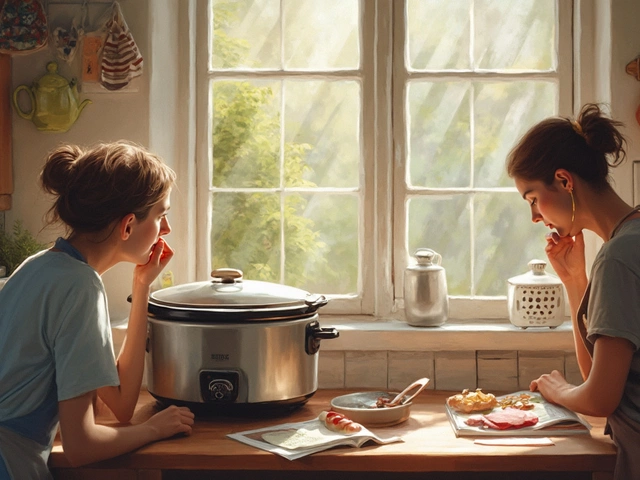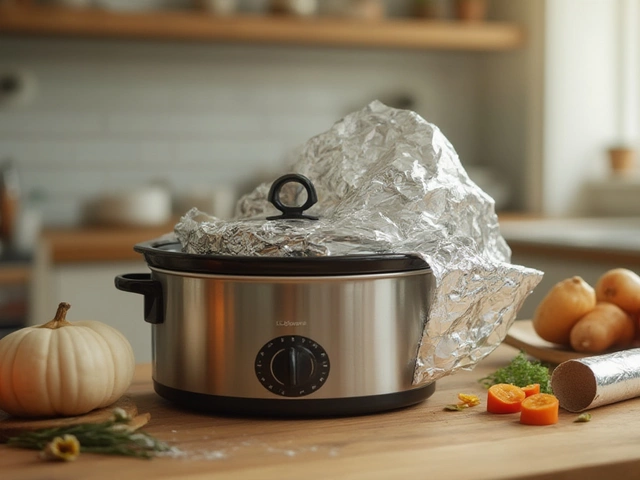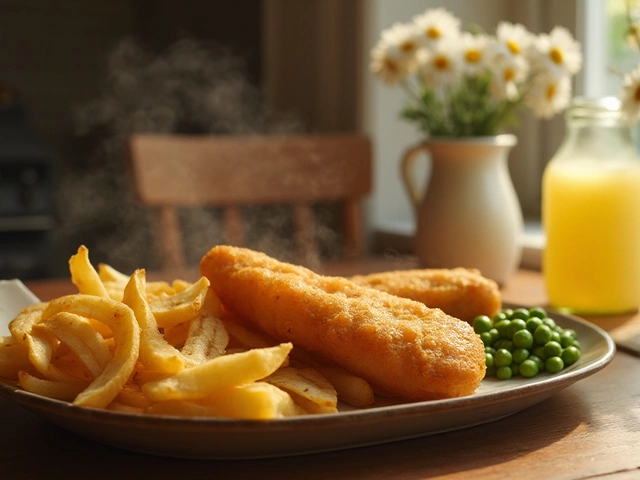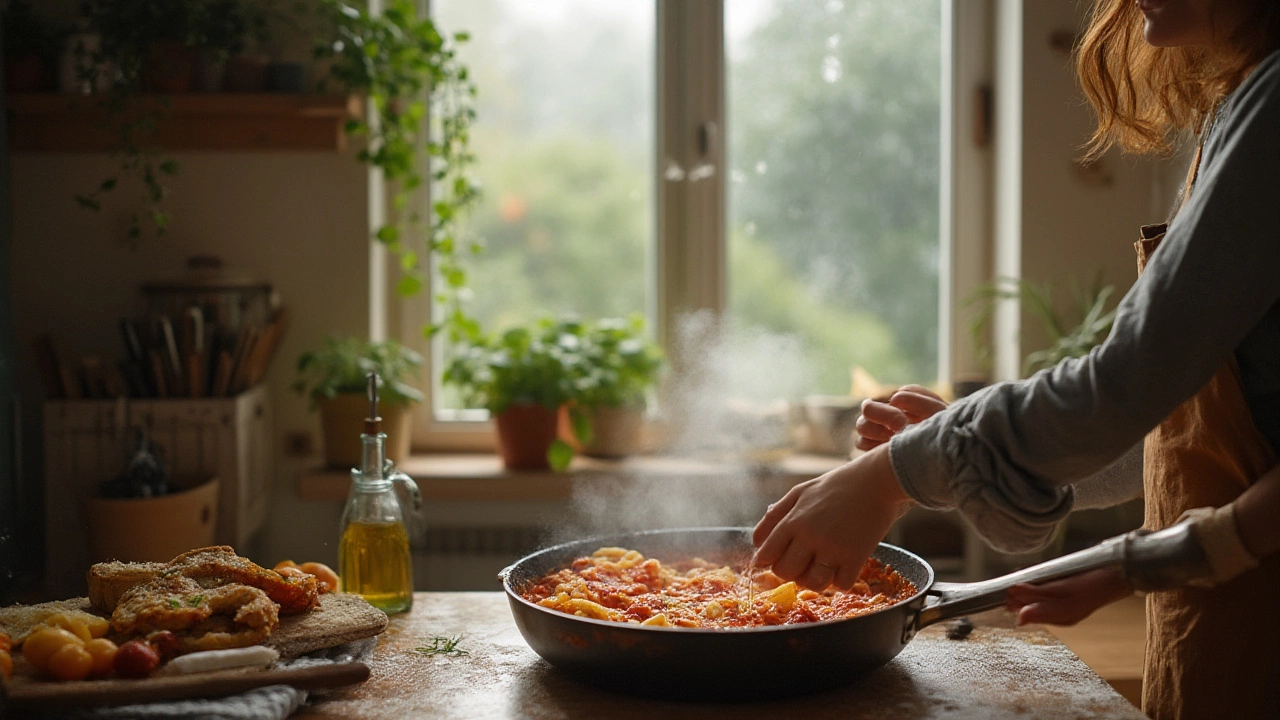
Ever wonder why restaurant pasta tastes so much silkier than what comes out of your home kitchen? The secret isn’t hidden in rare ingredients or some chef-only gadget. It sits right in your pot, bubbling away—the pasta water trick. Ignore it, and your carbonara will always need extra cream to get close to that perfect coating. Use it, and even jarred marinara feels like a chef’s masterpiece. The crazy thing? Most home cooks pour that kitchen gold right down the sink.
What Makes Pasta Water So Special?
Pasta water isn’t just hot water with noodles floating around. It’s brimming with starch, thanks to the magic that happens every time you boil pasta. As the noodles cook, they shed their surface starch into the water. That isn’t just a happy side effect—starch is exactly what allows sauces to stick to noodles rather than sliding off or puddling up on the plate.
Let’s break down what’s inside your average pot after cooking spaghetti for ten minutes. Per a 2019 study published in Food Chemistry, every liter of pasta water can contain over 10 grams of dissolved starches, including amylose and amylopectin. Those names sound chemistry-class-boring, but all you need to remember is this: they grab hold of sauce molecules like little glue dots. That’s why when chefs say “add a splash of pasta water” to your sauce, they’re not just playing Italian grandma for fun—they’re giving you the edge that brings everything together.
But that’s not all. There’s also salt in there, especially if you follow the “water should taste like the sea” method. Salty pasta water gives your noodles flavor right inside, instead of relying on sauce to do all the heavy lifting. Add to this trace proteins and a small bump in minerals leached from both the pasta and your tap, and you’ve actually built a flavor booster right there in the pot without buying a single extra ingredient.
| Component | Approximate Amount (per liter) | Role in Cooking |
|---|---|---|
| Starch | 10g+ | Thickens & emulsifies sauces |
| Salt | Depends on your hand! | Seasons pasta & sauces |
| Protein | ~0.5g | Mild flavor, aids texture |
| Minerals (Mg, Ca) | Trace | Minor impact on taste |
You think only high-end Italian spots use this trick? Wrong. Even a midrange trattoria in downtown Boston or a street vendor in Rome knows to save some of that cloudy liquid. In kitchens everywhere, you’ll see a coffee mug parked next to the pot, ready to scoop up a half cup of magic right before draining.
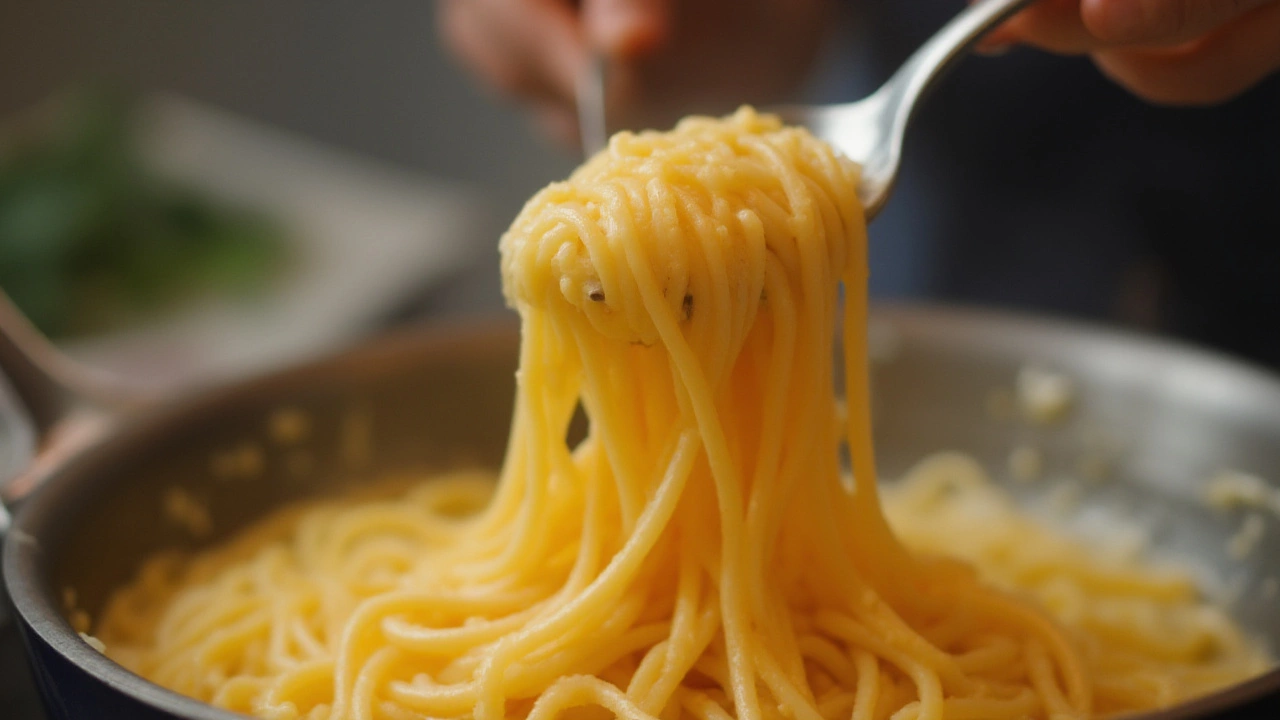
How to Use the Pasta Water Trick Like a Pro
Ready to see pasta water work its magic? Here’s the real process—the thing that makes home cooking feel like an episode of Chef’s Table.
First, always save a cup (or more) of pasta water before you drain your noodles. Don’t just eyeball it; set out your mug or measuring cup ahead of time because the stuff goes fast. Now the fun begins.
The trick works best with sauces that need to bind with pasta—think creamy Alfredo, cacio e pepe, aglio e olio, or any tomato-based sauce. Once your noodles are almost done, transfer them (a pasta fork makes this easy) straight into your sauce pan. No need to freak out if a little water clings to the noodles; that’s a bonus, not a problem.
This is where everything clicks. Add splashes of that saved pasta water trick right into the sauce pan while tossing your pasta and sauce together over low heat. The starches blend with the sauce, thickening it just enough to cling to every surface. As you keep tossing and stirring, the sauce becomes glossy—it’s that restaurant shine. Not only does it look better, but the flavor is more even. The salt from the water adds depth without making everything taste one-note.
If you’re making a creamy sauce, the pasta water means you can use less cream or butter and still get a lush texture. That’s part of the reason why an authentic carbonara uses nothing but eggs, Pecorino, and a bit of starchy water—not a drop of heavy cream in sight. Alfredo without gobs of butter? The pasta water has your back.
Even simple olive oil and garlic become special when pasta water is involved. When you toss your pasta and sauce together, add quarter cups of the reserved water, little by little, until everything feels just thick enough to coat the noodles. If you see the sauce forming little pools, keep tossing—it will come together. Overshot and made it watery? Turn up the heat and let some liquid evaporate, stirring constantly. It’s pretty forgiving.
- Always salt pasta water generously. Under-salted water can’t be fixed later.
- Use a spider strainer or tongs to transfer pasta. It lets you control how much water you carry over.
- If you’re working with a sauce that loves cling (like pesto), the starch helps keep everything stuck right where you want it—on your forks, not at the bottom of the bowl.
- Experiment with different shapes and sauce combos. Penne grabs sauce differently than fettuccine, but every pasta loves starchy water.
One last pro tip: you don’t need to use all the water you save. Go slow. The aim is that perfect, slightly loose sauce that hugs every noodle but doesn’t drown it.

Common Mistakes and Why They Matter
Let’s face it—most people either forget to save their pasta water, or save it but don’t know when or how to actually use it. That’s a real waste. Another classic blunder: adding the water too late, when the sauce is already on the plate. At that point, even the starchy stuff can’t bail you out. The magic only happens in the pan, with heat.
Don’t make your pasta ahead and rinse it off, hoping to catch the starch later. You’re literally washing away the glue that makes the whole trick possible. Same goes if you toss the pasta and sauce together off the heat—without warmth, the starch won’t combine, so everything stays goopy, not glossy. That’s the difference between home and restaurant pasta, plain and simple.
There’s also a sweet spot to how much water you carry over. Too little, and your sauce is sticky and dry. Too much, and everything turns into soup. If you’re nervous, add small splashes, stir, and see where you land. It’s one of those rare kitchen skills where you can actually taste as you go and not wreck dinner.
If you’re using gluten-free pasta, you’ll notice it releases even more starch. That can work for you or against you. Too much starch can actually make things a bit slimy, so go even more slowly with gluten-free stuff. The effect is similar, but it’s like dialing the volume up to eleven. Taste, adjust, taste again.
It’s worth mentioning, too, that over-salting can sneak up on you, since the salty water not only flavors the noodles but then gets concentrated in the sauce. Quick fix? Next time, use a little less salt or let the sauce reduce before making your final adjustments.
Wondering if you can “cheat” by adding extra starch some other way? Sure, some chefs will stir in a dash of flour or cornstarch. But it’s never quite the same as the pure, cooked-out starch from actual noodles. It blends differently, and can leave a floury taste if you’re not careful. Nothing matches the clean pull you get from pasta water.
Here’s something you might not expect: the pasta water trick can also revive leftovers. If your reheated pasta feels dry and clumpy, add a tablespoon or two of saved pasta water (yep, you can freeze it) while heating. It brings the dish back to life, tastes fresh, and saves you from having to drown things in more oil or cream.
So if you’re still dumping your pasta water out before straining, it’s time to change things up. The next time you whip up a pot, save a mug. Your sauces will taste richer, your noodles will feel smoother, and everyone at the table will notice that restaurant-level shine—even if you used the cheapest spaghetti from the bottom shelf.


